As the NPS Turns 106, Explore Yellowstone — the First National Park
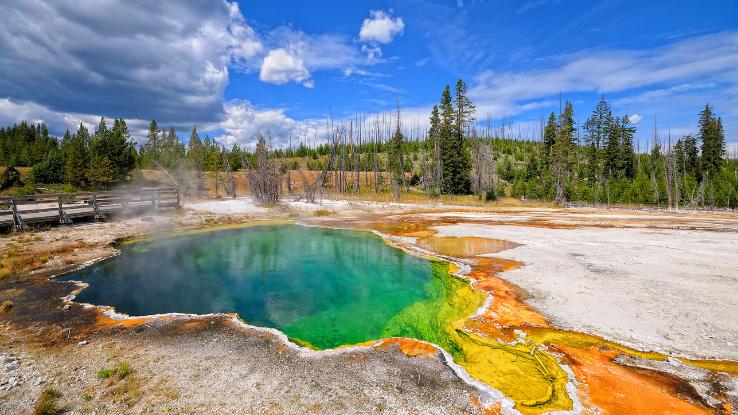
Yellowstone National Park, an 11,000-year-old natural wonder, is perhaps one of the most famous parks in the world. Stretching across Wyoming and dipping into both Montana and Idaho, the park has more than 2 million acres to its name.
In addition to its infamous geysers, the region is full of lush forest, stunning rivers and incredible waterfalls. Not to mention, it’s also home to more than 100 species of mammals, birds, fish and reptiles. All of this to say, Yellowstone is an undeniable American treasure — and there’s no better time to revisit the history of this gem than the anniversary of the founding of the National Parks Service. Celebrate today by reading more about the history of Yellowstone.
Yellowstone Before Colonization
According to the National Parks Service (NPS), people had visited and utilized the resources in what is now the Yellowstone region for a long, long time. “Greater Yellowstone’s location at the convergence of the Great Plains, Great Basin, and Plateau [Indigenous] cultures means that many tribes have a traditional connection to the land and its resources,” the NPS explains. “For thousands of years before Yellowstone became a national park, it was a place where people hunted, fished, gathered plants, quarried obsidian, and used the thermal waters for religious and medicinal purposes.”
Kiowa oral histories indicate that ancestors to the contemporary Blackfeet, Cayuse, Coeur d’Alene Nez, Shoshone, and Perce, among others, all traveled and hunted throughout the region between 1400 and 1700 or so. Later, the Crow, Umatilla, Shoshone, Bannock and other Blackfeet groups occupied areas near what is now called Yellowstone National Park, or traversed the grounds on annual hunts.
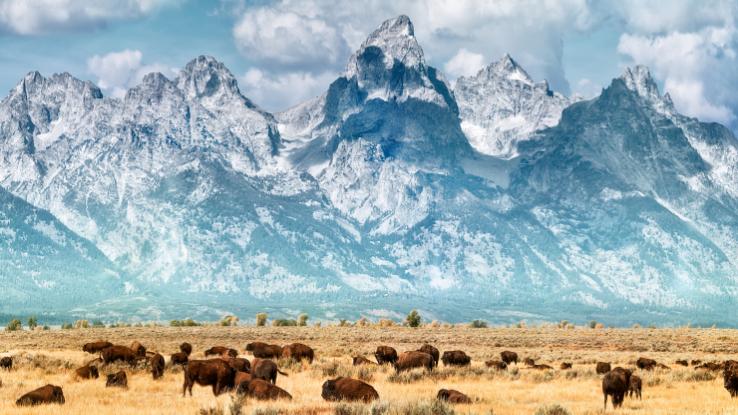
Various Indigenous tribes had unique names for the land, including “land of vapors” and “land of the burning ground.” The first colonizers to set foot in the area were French trappers, who dubbed the region Roche Jaune (Yellow Rock). Most historians assume the name came from the yellow rocks found along the river.
When the park was formally established, it took its name from the so-called Yellowstone River, a tributary of the Mississippi River that stretches from the Rocky Mountains all the way to southern Montana and northern Wyoming.
Before the western half of the country was colonized, Indigenous peoples utilized the land largely as a home and a hunting ground since the area was rich with wild animals, such as buffalo and fish. The location, climate, and natural make-up of the area made the region not only unique in its landscape, but in its resources, too.
Moreover, because of its warm water springs and freshwater sources, Yellowstone was very habitable. The ecosystem in the park is the largest in the United States when it comes to continuous “undeveloped” land — and it’s considered to be the world’s largest northern temperate zone ecosystem.

Unlike European colonizers, Indigenous folks utilize the land’s resources to sustain their communities without causing irrevocable damage to the environment. Because of the volcanic activity in Yellowstone National Park — home to a very large supervolcano, after all — the park is full of obsidian deposits.
The earliest example of human life in the park was established by the discovery of an obsidian arrowhead. The large amounts of obsidian in the park gave Indigenous people of various tribes and nations the perfect material for creating useful tools and weaponry.
From Lewis and Clark to John Colter
The Lewis and Clark Expedition was the first formal group of American colonizers to navigate the western U.S. in an attempt to take more land and settle it. When the so-called Corps of Discovery stumbled upon Yellowstone, they didn’t fully explore the area.
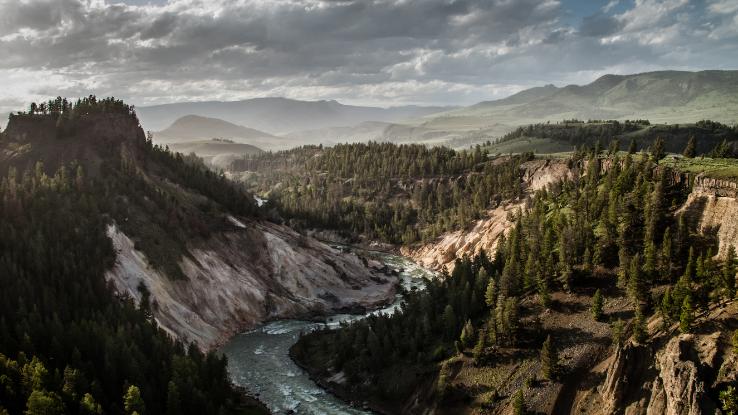
Instead of sticking with Lewis and Clark, John Colter decided to join some fur trappers and travel further into Yellowstone. During the winter of 1807, Colter and the trappers wandered the lands of what’s now Yellowstone National Park and documented the natural geothermal activity within the park’s grounds.
Colter once described the land as being made of “fire and brimstone.” If you’ve seen the park with your own eyes, you know it’s an entirely accurate description of some parts of it due to the magma and rocky terrain.
Mapping Yellowstone
Jim Bridger, an American mountain man, trapper, wilderness expert and Army scout, may have been the first white person to see the park’s great mountains and rivers. After attending the “great treaty council,” he created maps for several stream systems in the area. The maps he created — specifically the ones for Father Pierre-Jean De Smet, a Jesuit priest — were used to update important map systems of the region. They also helped confirm rumors about Yellowstone’s size and what, exactly, could be found within it.
In 1859, military surveyor Captain William F. Raynolds traversed the northern Rockies and decided to head to the Yellowstone area, too. Raynolds enlisted Bridger to escort him, and the two men headed to the Continental Divide in Wyoming. Difficult conditions — including thick layers of heavy snow — caused the two to turn back.
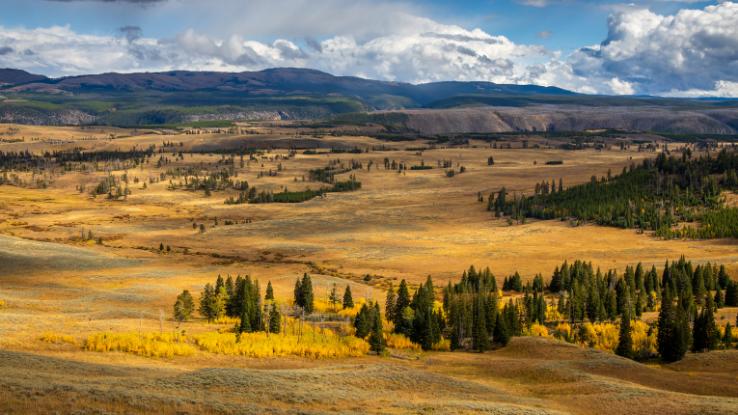
In the 1860s, the American Civil War became the country’s main focus, which meant that colonizing the West wasn’t at the forefront of the government’s efforts. After the war was over, a Montana official named Truman Everts joined an expedition party that was focused on Yellowstone.
In an unfortunate turn of events, he was separated from his group and spent 37 days wandering the land and eating thistles. When he was found, Everts was 90 pounds and frostbitten. Shortly after he recovered, Everts decided to write a book, Thirty-Seven Days of Peril. The book later helped Yellowstone gain national park status, namely because it detailed the terrain and experience of it in such a first-hand way.
The Cook-Folsom-Peterson Expedition, first officially documented and organized expedition to travel to the Yellowstone area, kept a heavily detailed record of their journey, which saw them following the Yellowstone River to the Yellowstone Lake. Shortly after that expedition, others headed to the then-popular region, including the Washburn-Langford-Doane Expedition, which, thanks to media coverage, truly captured the country’s attention.
One of the members of the expedition, Cornelius Hedges, wrote stories about his experiences in Yellowstone, and, later, gained national attention when they were published in the Helena Herald, a Montana daily newspaper. Following the widespread popularity of Hedges’ stories, regional scholars began talking to both Congress and the state government, trying to convince them to protect Yellowstone and its resources.
Gaining National Park Status
Eventually, Congressman William D. Kelley helped push the law through to have the region dubbed a “public park forever.” Even then, he understood the importance of conservation and proper resource management efforts at Yellowstone. Finally, in 1872, the country’s leaders could no longer ignore the park’s need for national park status. After a great deal of convincing, President Ulysses S. Grant signed the Yellowstone National Park Protection Act into law on March 1, 1872, making it the world’s first national park.
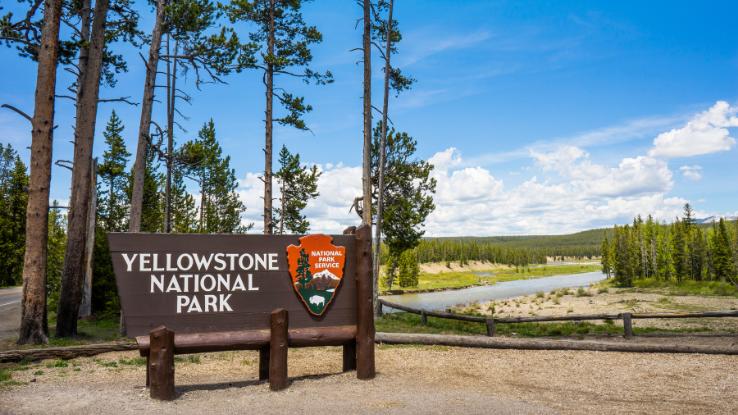
If Yellowstone hadn’t be declared a protected national park, the geysers, landmarks, wildlife and flora of the park might not exist today. At the very least, they wouldn’t be present in the same way we know them today. The designation placed an added focus on conservation as well as studying and preserving the area. Additionally, the region’s rivers, waterfalls, lakes, mountains, valleys and geothermal anomalies finally got the full attention they deserved, with stories published in all the major newspapers and periodicals throughout the United States.
However, following an initial burst of excitement for the park, the allure of Yellowstone waned. In the decade after the park gained protected status, the number of park visitors declined sharply. Fewer people seemed interested in experiencing the area’s geothermal features, wildlife and landscape. (Keep in mind, it was still uncommon for people to travel for “fun” in the late 1800s.) Because it was no longer the focus of the country’s attention, the park was, in large part, left alone — free from human interference.
Establishing the National Park Service
In 1886, the U.S. Army took over management of the park. They built military structures, including Fort Yellowstone at the Mammoth Hot Springs location, but resource protection was limited. From 1869 to 1890, several expeditions took place in Yellowstone National Park, but, by 1894, Congress realized the need to adopt stronger laws for resource and park protection.
Eventually, the National Park Service was established on August 25, 1916, and, by the following year, began managing the park’s resources and wildlife and setting up public education about the area. For the last 105 years, the NPS has maintained Yellowstone National Park’s natural integrity.

Thanks to the NPS, the park’s treasures, including formally designated national historic landmarks, have been protected. One of the most well-known landmarks is the district that includes Old Faithful Lodge, which sits next to the iconic Old Faithful Geyser. Other formally designated national historic landmarks include Fort Yellowstone, which is near the Mammoth Hot Springs area, and the Norris Museum and Norris Comfort Station. In addition, Obsidian Cliff, a giant cliff that was formed from cooling lava, has landmark status.
Additionally, Yellowstone is a recognized biosphere reserve — an internationally recognized area that is protected and used for natural resources, while simultaneously being conserved by those who manage it. Because of its abundant natural treasures, the United Nations (UN) formally designated Yellowstone as a biosphere reserve in 1976, noting that it is valuable to “research in the service of man.”
As part of the World Heritage Convention international treaty, the park was designated a UNESCO World Heritage Site, due to it being an important part of the country’s history and natural resources. In an effort to call attention to threats to the park’s ecosystem, it was put on UNESCO’s watch list in the mid-1990s, but it was removed in 2003.
Yellowstone Today
In June of this year an unprecedented amount of rainfall resulted in major flooding in Yellowstone park. Sections of roads were washed away and concerns were raised about the safety of some bridges after the flooding. At the time of this writing, the park staff have reported that 93% of the roads are open again and 94% of the back country is accessible to visitors. Still, the chilling event was just one of many impacts that the climate crisis is having on our national parks. Remember this the next time you visit, and take extra seriously any instructions you see to stay off of certain paths. The park rangers are very hard at work trying to preserve this important national park.
Since the turn of the 20th century, the number of visitors traveling to Yellowstone steadily increased. This trend continued as a greater number of Americans gained access to automobiles and started traveling for pleasure. In recent years, the park has become a tourist hotspot, attracting more than 4 million visitors in 2018 alone. Park visitations take place during all four seasons, and there are multiple tour packages available, ranging from campsite experiences to more comfortable (and often historic) accommodations.

In addition to being a tourist hotspot, Yellowstone is also a hotspot for volcanic activity. The volcanic area is part of the Snake River Plain, and, according to some reports, the zone experiences ongoing activity even today. As a result, it’s considered one of the largest active volcanoes in the world. The entire Yellowstone area was formed by large, explosive eruptions that took place under the surface. At around 60 kilometers long, the potentially active magma chamber causes some reasonable concern. It’s frightening to consider how large an eruption could be if the area exploded again, but it remains docile — for now.
Volcanic activity aside, Yellowstone remains one of the most beloved natural areas in the world — and for good reason. If you have the opportunity to visit Yellowstone, or any of the country’s national parks, be sure to treat these gems with the respect they deserve.





